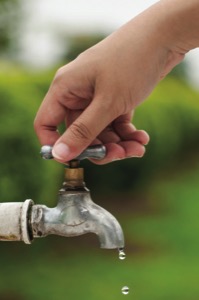
California is in trouble. Big time. In the midst of one of the most notable and long-lasting droughts in the history of the state, water, or the lack thereof, is on every resident’s mind. Certainly an offshoot of climate change, it was reported in April that snow water content in the Sierra Nevada’s was at just 5 percent of its historical average and the lowest since snowpack records were tracked since the 1950s. This has a significant impact as the lack of runoff will create a serious shortage of water this summer and fall when water demand is traditionally high.
What to do, California? Gov. Brown has now mandated by executive order that water use in the state be reduced by 25 percent. Given the severity of the conditions, we must ask, is this really enough? Mayor Kevin Faulconer of San Diego announced new rules and restrictions for residents. These include limiting watering of lawns to three days a week and no watering permitted within 48 hours of rain. He also announced turf replacement rebates for people who replace water-dependent lawns with artificial turf. Medians will no longer be watered and there will be reduced watering for parks and municipal golf courses. Restaurants must serve water only when asked and hotels will clean linens likewise.
These are steps in the right direction, but surely not sufficient should drought conditions persist. Residents would be wise to consider how they might contribute to a massive water-saving effort that goes above and beyond current restrictions. They will have to begin thinking of their state in the same way as their southeast neighbors have, as a desert environment.
Some of the remedies include:
• Replacing ornamental water needy plants with drought resistant landscapes
• Considering use of artificial turf rather than live plants;
• Utilizing barrels to capture rainfall for irrigation
• Using “purple pipe” reclaimed water for irrigation, thereby salvaging potable water resources
• Reducing water use for home use including shorter showers, dish washing only when absolutely necessary etc.
A change in consciousness is certainly needed. We need to “think green” by cherishing the beauty of “brown” and entertaining xeriscape plantings. We can no longer enforce our will on the land. It is telling us what it needs and the only way to survive is to listen. San Diego has set aside $450,000 to reward residents $1.50 for every square foot of live grass they replace with artificial, this is on top of the state offer of $2 per square foot. The government’s willingness to incentivize residents willing to make the change is an indication of just how serious the problem has become.
As we continue to do our rain dances, we must be cognizant that the drought, now in its fourth year for California, might just carry on and that the conditions might just persist, or yes, even worsen.
It’s a new world and we must all play our part in creating a new reality. For further information, log on to wastenowater.org.











